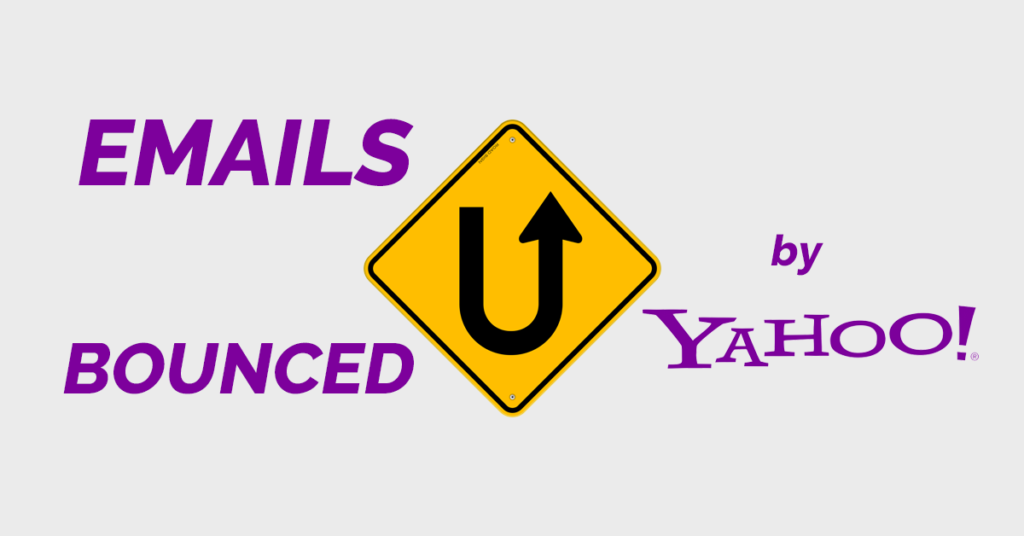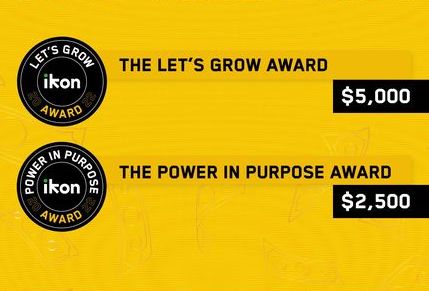???? (Note: There’s a video at the end of this post that walks you through the process outlined below.)
Yesterday Keap sent an email to most Infusionsoft users with the subject line “Action Required: Update email addresses bounced by Yahoo”.
If you’re like most, you’re wondering what the heck this means and what you need to do to take care of it.
WHY IS THIS HAPPENING?
Email providers like Yahoo, AOL, Gmail, and others are taking a more active stance against unwanted emails.
Note that I said “unwanted emails”, not SPAM. Yes, they’re trying to block legitimate SPAM, but they’re also trying to help their users see only the emails they want to see. More and more they’re using machine learning to measure individual behavior and they’re placing emails in the inbox or the promotions folder or the spam folder based on what individual users do historically – whether they open emails regarding certain subjects, whether they open emails from certain senders, whether they click certain emails, whether they reply to certain emails, etc.
So, if a user signs up for a Yahoo account, they use it for a time, and then they stop using it or they close it, Yahoo considers that email account “inactive” and will start bouncing emails sent to it. At that point, if you or I send an email to that account, Yahoo knows that we’re sending bulk email because we’re sending to old email addresses that we haven’t verified in some time and our list isn’t “clean”.
In that situation, our sender reputation is going to be decreased. It’s important to note that all aspects of the sender reputation may be decreased. Notably, the server that is sending the email (Infusionsoft), the sender’s email address (your email address), and the sender’s domain (all email addresses on your domain). Therefore, sending email to these addresses hurts you directly and it hurts Infusionsoft.
That is why Keap is sending these emails to you. They’re trying to help you, and, they’re trying to protect their server reputation.
They’re also trying to make sure your emails get delivered in a timely manner. When the emails you send soft bounce, Infusionsoft servers will attempt to resend the email a few times because sometimes they’ll end up going through. If we all send a high volume of emails that bounce, the Infusionsoft servers get backed up trying to resend all those bounced emails. And that is what causes email delays.
WHAT SHOULD I DO ABOUT IT?
- STEP 1: CHECK YOUR ``DELINQUENT EMAILS`` SMART LIST
Keap has done some work for you already by using machine learning to identify email addresses that are “delinquent”, or haven’t been used in a while and are at risk of being spam traps.
Do a Contact search in your Infusionsoft account and select “Delinquent Emails” in the “Smart List” search under tags.
Find those contacts and manually opt them out, or tag them in a way that ensures you don’t send any more email to them, and remove them from any campaigns in which they may be active. To opt them out, check the box at the top of the list to select them all, then choose “Update Opt-In/Out Status” from the Actions drop down. Choose “Opt Out” from the drop down on the next screen and then Process Action.
Don’t worry about losing these contacts. They’re dead (at least by email) already. If you have other contact information for them (phone, fax, mailing address) you may consider using other methods to reach out to them and invite them to opt back in using a new email address.
- STEP 2: FIND MORE ``AT RISK`` CONTACTS AND HANDLE THEM
Go to your Marketing Reports and find the “Email Status Search”. Use the “Last Engagement Date” criteria to find contacts who have not engaged with your emails for over X number of months. Choose the number of months that makes sense for you. In my opinion, if they haven’t engaged for over 6 months, it’s time to deal with them.
Next, decide what you want to do with those contacts. Opting them out manually is probably a good idea. If you want to take a more cautious approach, run a re-engagement campaign to that list first, and then opt out those that don’t respond.
- STEP 3: CREATE AN RE-ENGAGEMENT PROCESS FOR CONTACTS THAT STOP ENGAGING
Go to your Marketing Settings in Infusionsoft and click on Automated List Management.
Under the “Unengaged Marketable Status” section, set the number of months it takes for an email address that doesn’t engage to become marked as “Unengaged Marketable”. That default is 4. Somewhere in that range is fine.
Next, go to “Email Status Automation” (also in the Marketing Settings area) and create a trigger that runs as soon as a contact’s email address becomes “Unengaged Marketable”. Typically you’ll just set this action to apply a trigger tag that achieves a goal in a campaign that starts a sequence.
Lastly, build a campaign that starts with a tag goal from the tag you apply in the “Email Status Automation” trigger. Then connect a sequence and utilize that sequence to re-engage the contact that is not engaging. This can be done by a series of emails, triggering 3rd-party SMS messages, creating a task for someone to call them, or any other actions that might help you re-kindle the connection with the contact.
- STEP 4: CREATE A PROCESS TO HANDLE ``DELINQUENT EMAILS`` AUTOMATICALLY
Now you’re going to repeat the process we just outlined in Step 3, but for “Unengaged Non-Marketable” emails.
Go back to your “Automated List Management” settings and set the number of months it takes for an email address to be marked as “Unengaged Non-Marketable”. Here, I recommend being very cautious. As soon as you turn on this setting and save it, Infusionsoft will automatically mark those email addresses that qualify as “Unengaged Non-Marketable” – this opts those emails out (unless they opt back in or you manually change their status one-by-one). The default number of months is 12. If you’ve been using Infusionsoft for any amount of time more than 12 months, I’d recommend starting with a number of months slightly less than how many months you’ve been using the system. Turn the feature on. Save the setting. And then go check and see how many contacts were marked “Unengaged Non-Marketable”. If you’re ok with the number, reduce the number of months and go check again. Do this slowly until you feel like you’ve reached an acceptable number. It can be a little disconcerting to all of a sudden have a bunch of emails opted out immediately. So, I like to take it slow and manage it on my own terms.
Once you’ve got the number of months finalized, go to your “Email Status Automation” settings and create a trigger that applies a trigger tag when an email address is flagged as “Unengaged Non-Marketable”.
Next, go back into the campaign you created in Step 3 and add a tag goal following the re-engagement sequence. Select your trigger tag in that goal and follow the goal by a sequence. In that sequence, apply a tag you can use to exclude these contacts from future email communication. Also, trigger any other kind of follow up you’d like to do to try and get a new email address for that person (call them, send them direct mail, etc) because they’re current email is now opted out.
There are many ways you can structure campaigns to manage email engagement in more sophisticated ways, but what I described above is a good start.
Let me know if you have any questions.
Here’s a video walking you through the process:



Thanks for sharing Tyler!!!